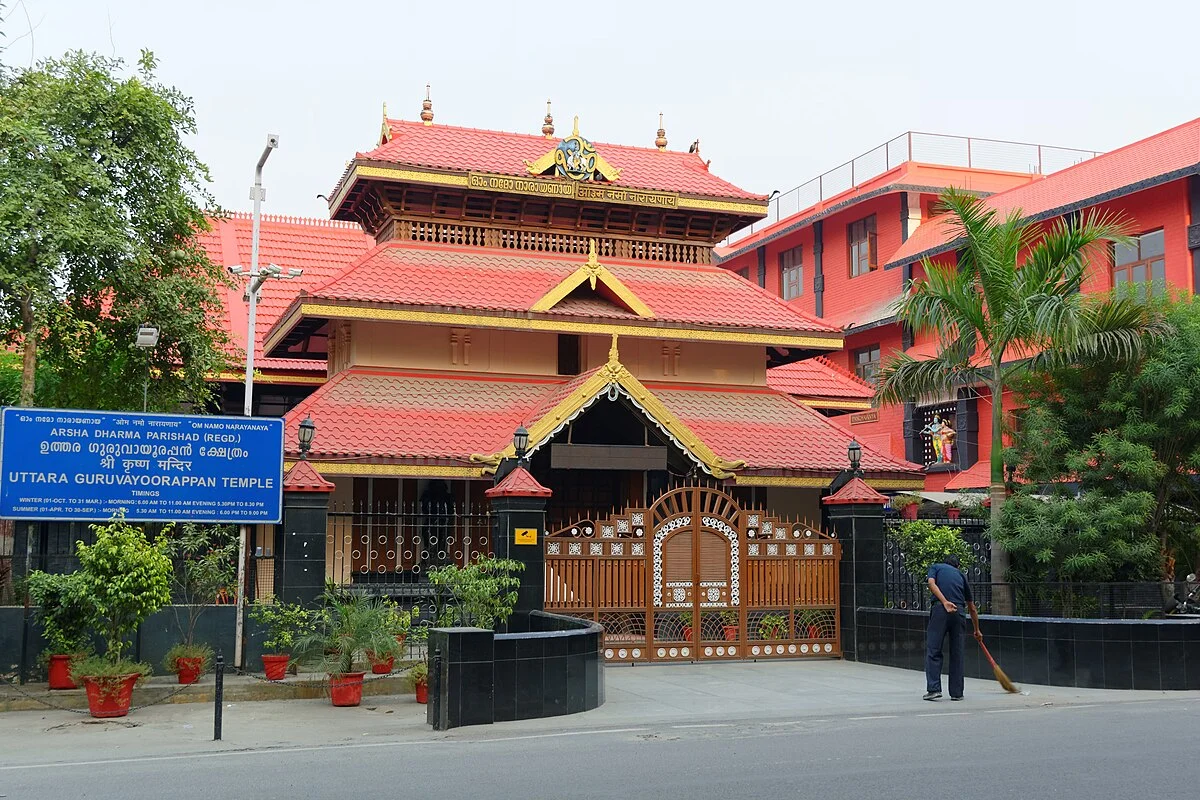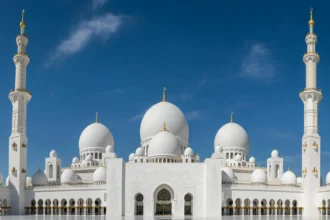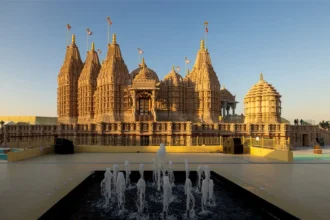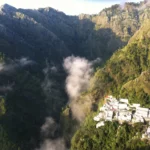Nestled near the sleepy town of Guruvayur in Thrissur District, Kerala, the Guruvayur Temple is more than a shrine, it is a living tapestry of devotion, myth, art and community life.
Dedicated to Guruvayurappan, a youthful four‑armed form of Lord Vishnu, it is often called the “Dwarka of the South.” Every year millions walk its sacred corridors, drawn by faith, miracles, and timeless ritual.
Origins, Legends and the Name Guruvayur
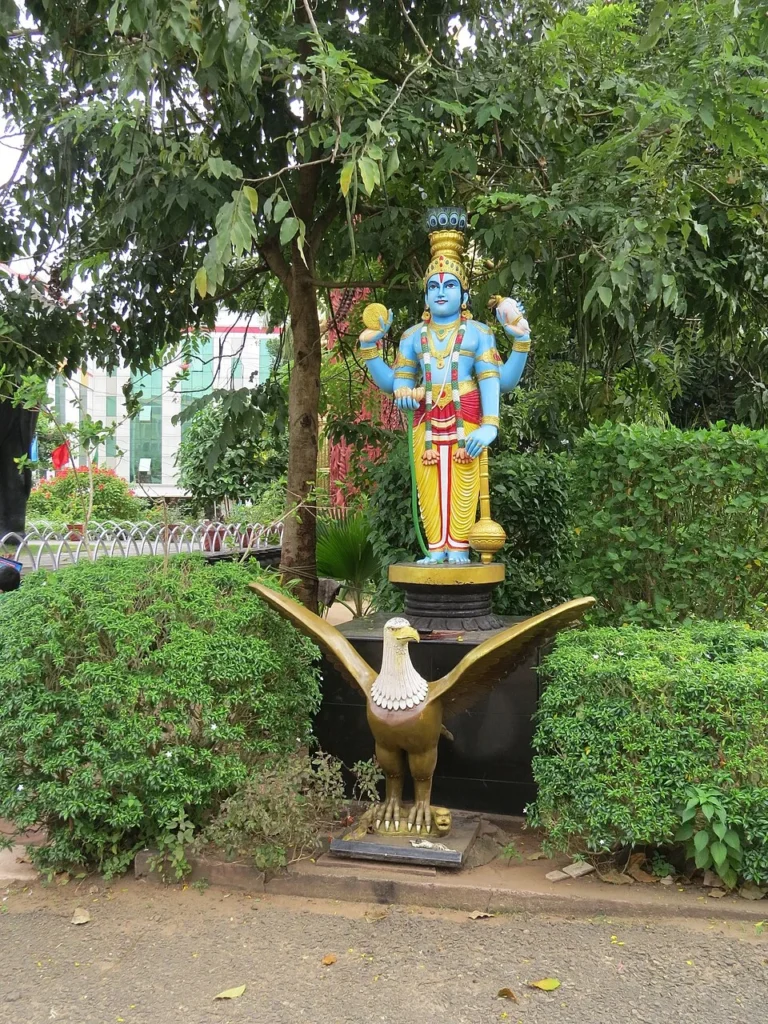
Legend says that when Krishna ruled from Dwarka, he entrusted an idol with his charioteer Udhava who reached out to Vayu, the wind god.
The statue found its home in Kerala, consecrated by the combined blessing of Guru (Brihaspati) and Vayu Deva, giving rise to the name Guru‑Vayu‑ur.
Devotees see the four symbolic weapons, conch Panchajanya, discus Sudarshana Chakra, mace Kaumodaki, and lotus with a tulasi garland, each held by the idol, as signifying divine power, protection and purity.
Architecture, Art and Ancient Innovations
The current temple structure derives mainly from the 16th and 17th centuries, with ornate gopurams and an imposing Deepastambam, a column of lights.
Under the banyan tree named Manjulalthara temple folklore recalls a devout girl who once placed a garland on a stone when she found the main temple closed. That same garland was later seen clinging to the deity, and the tree was worshipped ever since.
In 1970 a blaze damaged the sanctum and its historic murals. In response the temple trust founded the unique Institute of Mural Painting in 1989.
It now runs a five‑year course in Kerala mural tradition, giving scholarships, lodging and a path for new artists to learn through a guru system in service of preserving sacred temple art.
Rituals, Festivals and Miracles
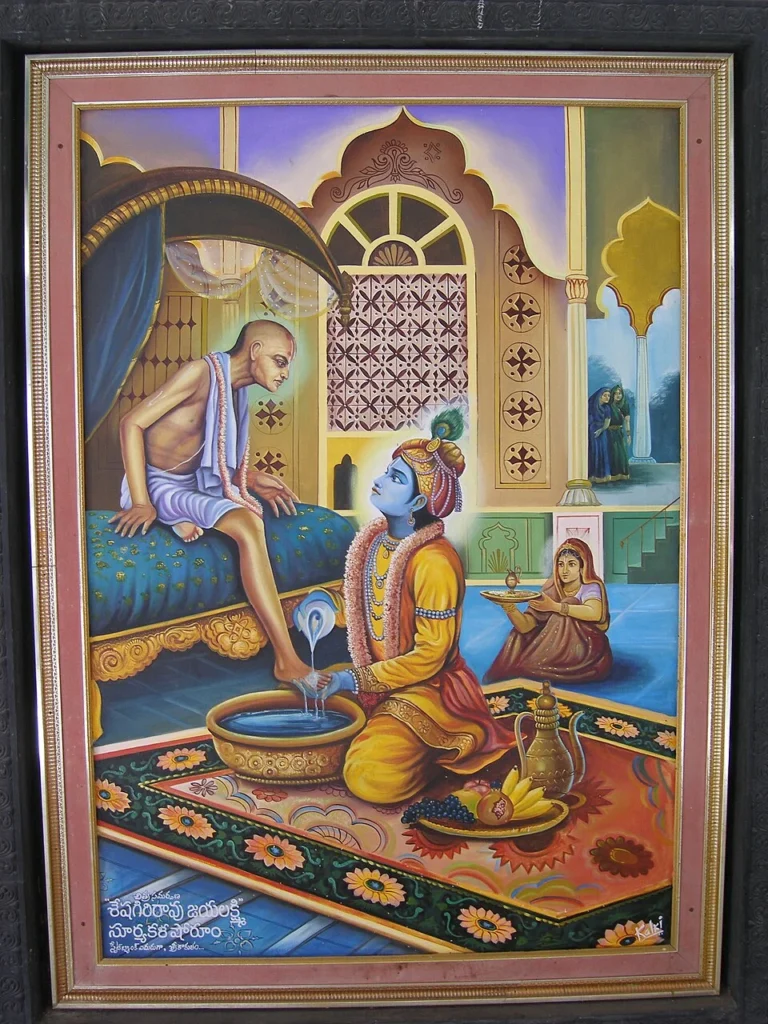
The Guruvayur Ekadashi festival celebrates the day Guru and Vayu first installed the deity. It also marks Mokshada Ekadashi when Krishna taught the Gita to Arjuna. It is also remembered as the passing of the legendary temple elephant Kesavan who is believed to have attained Vaikuntha after decades of devoted service.
Another special day is Kuchela Dinam when devotees offer beaten rice mixed with jaggery, coconut and ginger, recalling Sudama’s offering to Krishna and his transformation from poverty to prosperity. Offering this prasadam at the Namaskara Mandapam is believed to invite blessings of wealth and wellbeing.
One of the most cherished folk tales is that of the young priest Unni who offered rice and curd to the Lord when his father was absent. When he wept fearing retribution, a voice declared “I am the guilty one”, and the rice plate was found empty. Stories like these still tremble in pilgrims’ hearts decades later.
Even Sri Adi Shankaracharya once stumbled unconscious during a procession because he tried to bypass the temple without obeisance. On waking he composed eight hymns in praise of Govinda and bowed in respect.
Elephants and Elephant Care
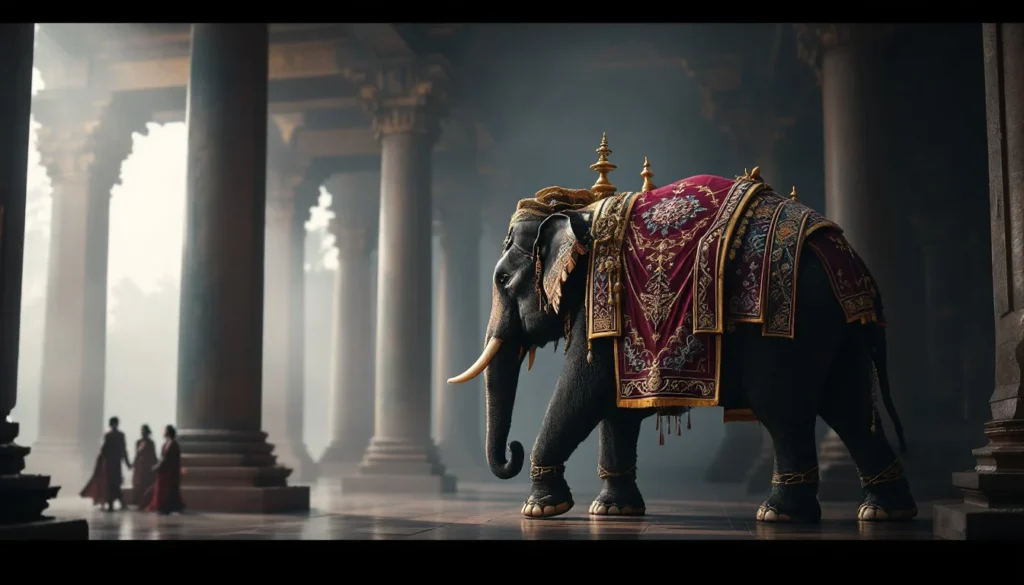
Guruvayur is famous for housing many sacred elephants at the Punnathur sanctuary. The most legendary among them was Guruvayur Keshavan. A royal gift in the 1920s he served for decades, revered as Gajarajan or King of Elephants.
He would kneel his front legs only for those carrying the deity thidambu and never harmed anyone. He died during Ekadashi in 1976, fasting in front of the temple in ultimate devotion. Every year the other elephants line up before his statue and place garlands in his memory.
In 2025 the Devaswom Board inaugurated a new rejuvenation and palliative therapy program for the temple elephants. Led by veterinary experts it provides specialized rice balls and rest cycles. At 35 years of this tradition, the rituals now combine ancient reverence with modern veterinary care.
Modern Reforms, Technology and Controversies
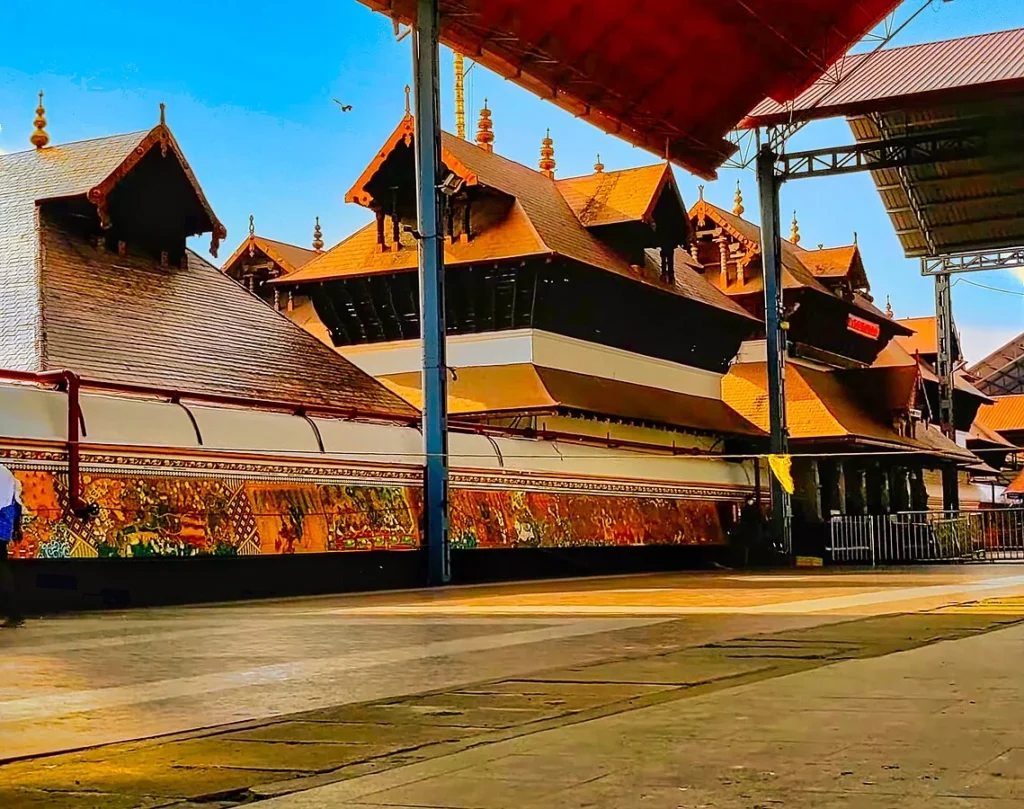
In mid‑2024 the temple shifted all its power needs to solar energy. Panels generating nearly 275 kilowatts installed atop guest houses now save lakhs in electricity bills. This green initiative aims to reduce temples’ carbon footprint and ensure uninterrupted worship.
Simultaneously the devaswom introduced regular training for staff, especially security guards, to adopt a devotee‑friendly approach. The program addresses criticism of harsh behaviour and will now be conducted bi‑annually to ensure respectful and humble service.
However audits brought controversy. In early 2025 audit authorities flagged discrepancies in temple finances, missing gold locket sale proceeds, delays in updating bank statements, and software accountability gaps.
Interest from over eight hundred kilograms of gold invested in banks generates crores annually, but the audit team demanded transparency and modern accounting reforms.
The Kerala High Court is now hearing appeals over recruitment procedures in the Devaswom Board and has suspended certain appointments until resolution. The court also ruled that important rituals such as Udayasthamana puja must remain under the authority of the temple tanthri, not the managing committee.
Queue Fears and Fainting Pilgrims
Many visitors praise the temple for its spiritual atmosphere, but others voice frustration with long queues and opaque entry systems. There are reports of special darshan passes allowing faster access and allegations of guard misconduct.
Some local Reddit threads note elderly pilgrims fainting due to mismanaged lines. This has prompted calls for digital ticketing and more transparent crowd control mechanisms.
Lesser‑Known Tales and Divine Grace

Seasoned pilgrims whisper stories of saintly visions and odd happenings during the annual festival. The banyan tree of Manjulalthara still draws devotees who feel prayer offered there brings immediate peace.
A secret room once discovered behind the sanctum is said to be used only for special pujari rites, but no outsider is allowed inside.
Corners of the temple compound also hide a small well whose water tastes medicinal, called Govinda’s drop. Local lore says that a child who took a sip recovered from a chronic fever overnight.
Despite modernization, these silent stories live quietly in temple lore and bind generations of families to its spiritual promise.
Timings and Tips
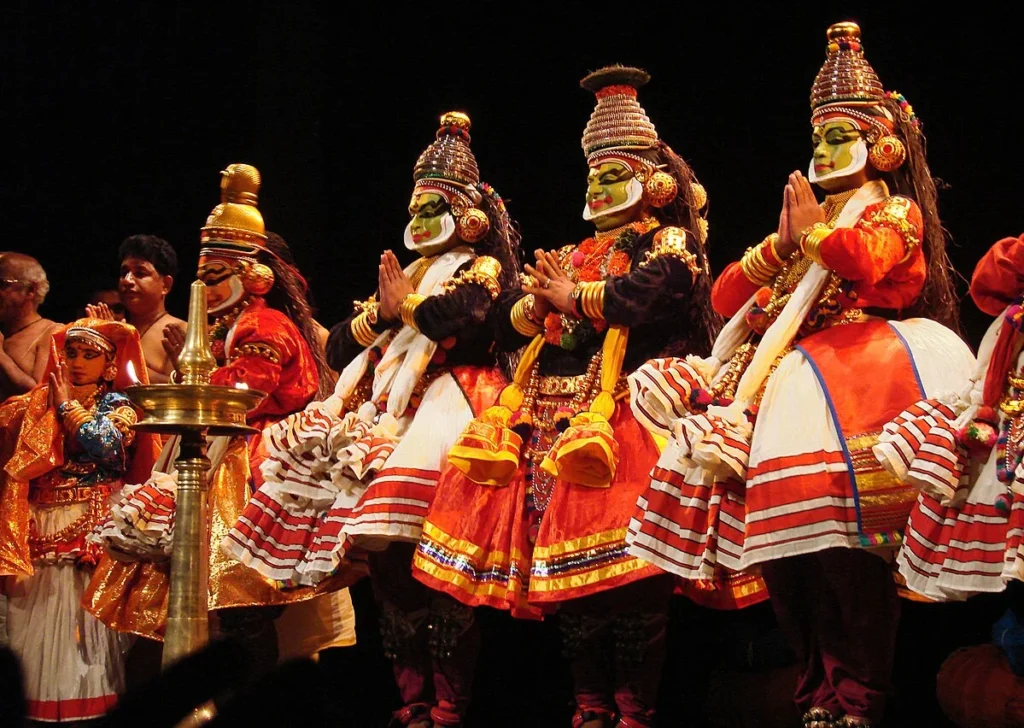
The temple opens early morning and remains accessible all day with breaks only for major festivals. Devotees are asked to remove shirts before prasadam feeding, though in 2025 the rule was revoked when entry for prasada feeding no longer requires removing the shirt.
The Board has emphasized devotees must always deal with official channels, no third‑party agents are authorized for darshan booking or offerings.
Festival performances like Krishnanattam, a classical dance drama tracing Krishna’s life in eight episodes, continue in the temple courtyard.
Offered by a troupe maintained by the temple trust, this art form highlights devotion as dance and is performed as offering from devotees.
Reflections on Faith, Modernity and Heritage
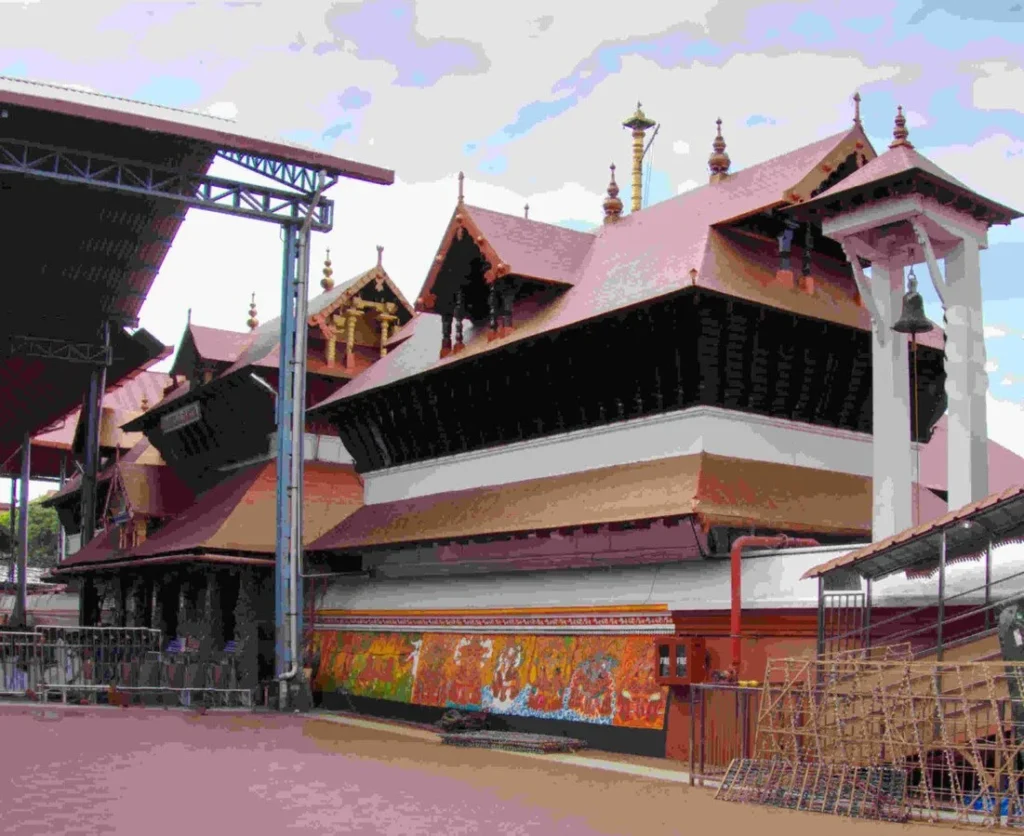
The Guruvayur Temple today stands at a crossroads of ancient devotion and modern management. Solar rooftops hum above centuries‑old halls. Murals taught in an institute preserve murals that once nearly vanished.
Staff trainings meet the expectations of global pilgrims. Court rulings affirm ancient ritual authority while demanding accountability.
At its core remains a simple image of a four‑armed child‑Krishna. Around him gather stories of the devout king immune to fate, the priested child, the disciplined elephant, the prostrating sage. Every Saturday, festival or sunrise, pilgrims chant Govinda with the same fervour as their forebears centuries ago.
Guruvayur is not just the most visited shrine in Kerala. It is a layered chronicle of belief, art, care, controversy and unwavering faith, a temple that feels alive because it is built by millions every day.

